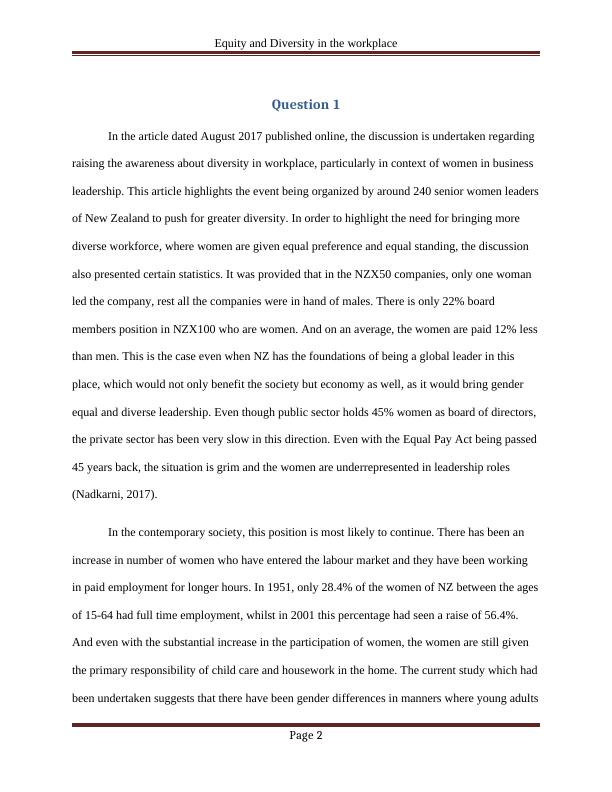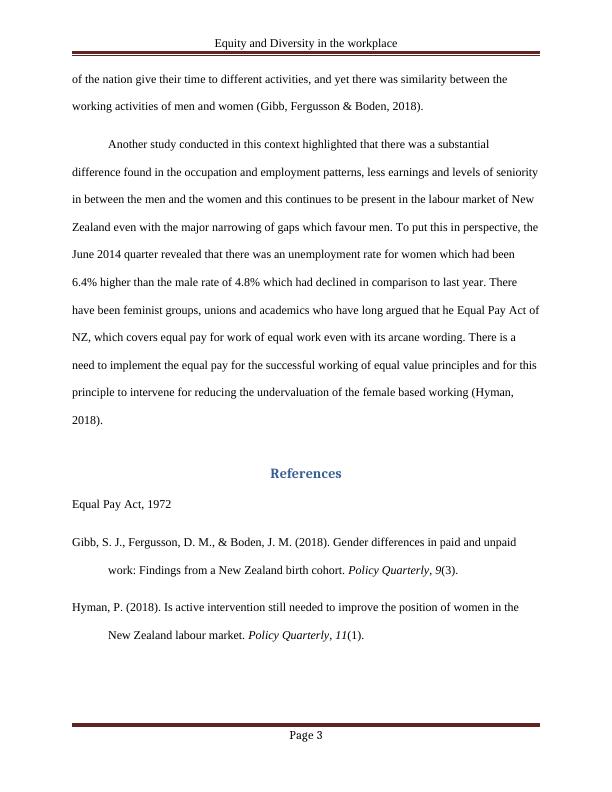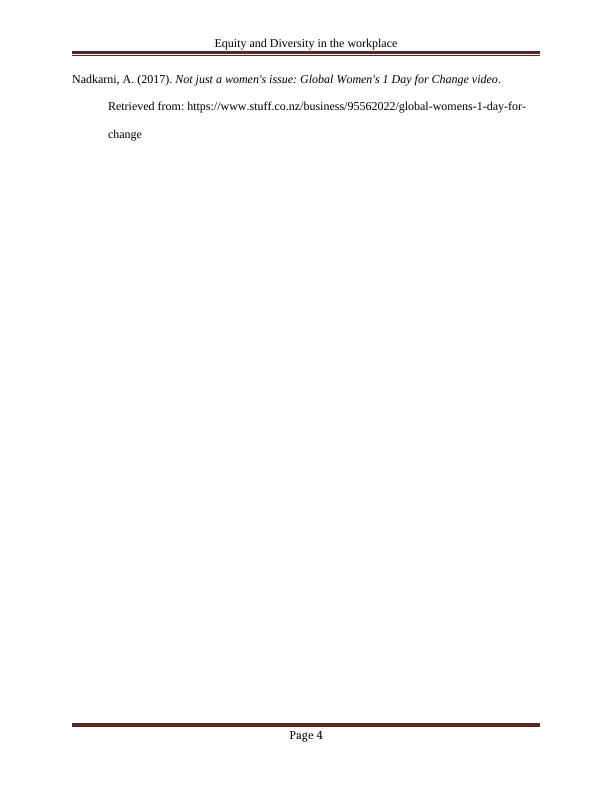Equity and Diversity in the Workplace: A Discussion on Legislation and Sociological Theory
Define 'inequality regimes' and their impact on work organizations, explore the relationship between intersectionality and workplace equity and diversity, examine the experiences of young workers in relation to inequality regimes, and discuss strategies to challenge and overcome inequality regimes in practice.
19 Pages4065 Words320 Views
Added on 2023-06-13
About This Document
This article discusses the importance of equity and diversity in the workplace in New Zealand, highlighting relevant legislation and the sociological theory of intersectionality. It covers topics such as the Human Rights Act, Equal Pay Act, and the concept of intersectionality.
Equity and Diversity in the Workplace: A Discussion on Legislation and Sociological Theory
Define 'inequality regimes' and their impact on work organizations, explore the relationship between intersectionality and workplace equity and diversity, examine the experiences of young workers in relation to inequality regimes, and discuss strategies to challenge and overcome inequality regimes in practice.
Added on 2023-06-13
ShareRelated Documents
End of preview
Want to access all the pages? Upload your documents or become a member.
Gender Inequality at Workplace
|5
|889
|461
Managing Employment Relations
|6
|1407
|400
Gender Diversity Assignment
|6
|1058
|48
Assignment on Diversity Analysis and Management
|11
|2669
|139
Gender Inequality in the Workplace: A Global Challenge
|12
|2888
|269
Human Resource Management Assignment - (Solved)
|12
|2843
|34




